Oceans. They cover 71% of the Earth's surface and produce half the world's oxygen. They are also home to an astonishing diversity of beautiful and bizarre marine life.
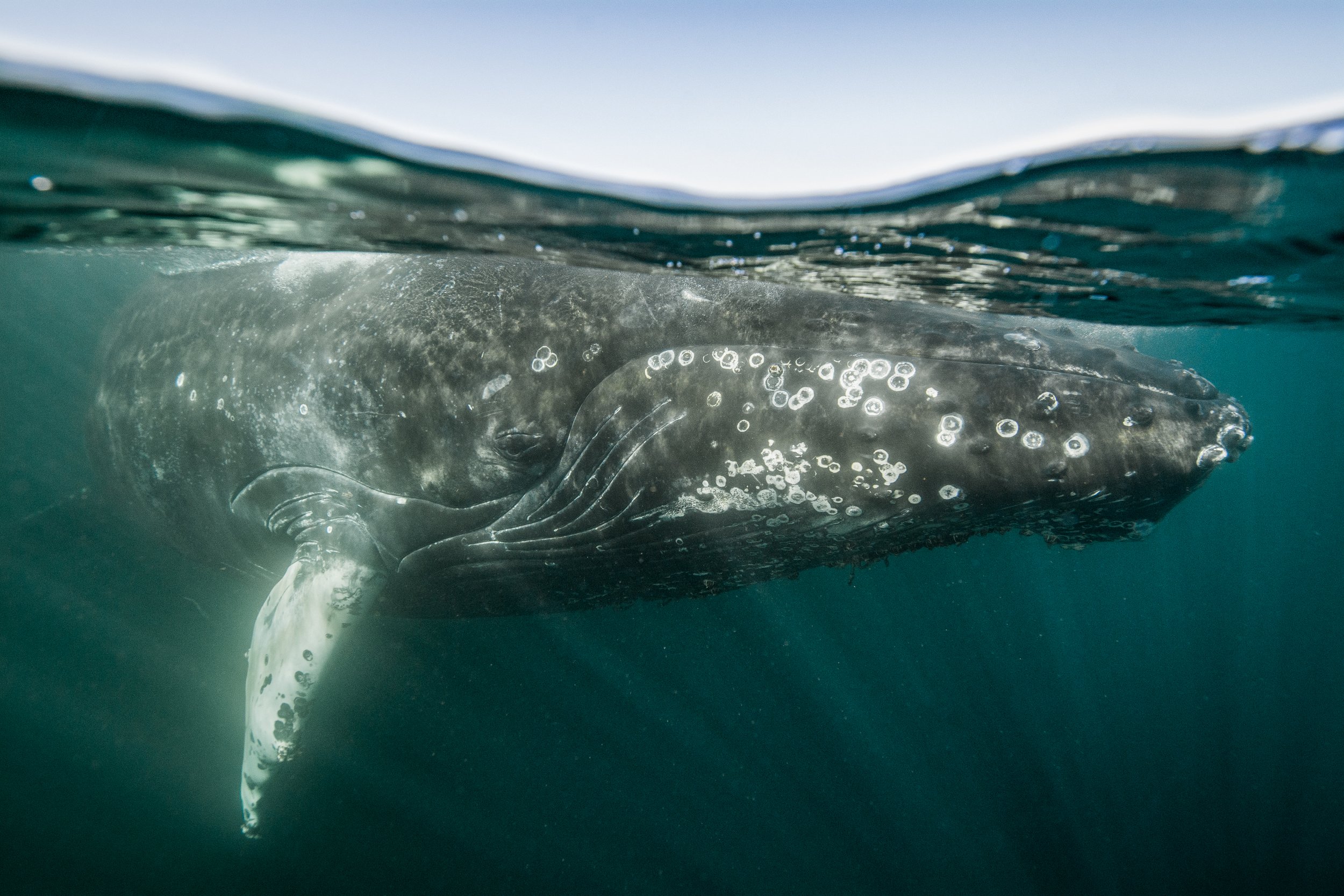
A young humpback whale rests at the surface of the Bay of Fundy in Canada. Humpbacks, like most baleen whales, migrate thousands of kilometers from tropical wintering grounds to feed in the nutrient rich waters of the worlds temperate oceans.
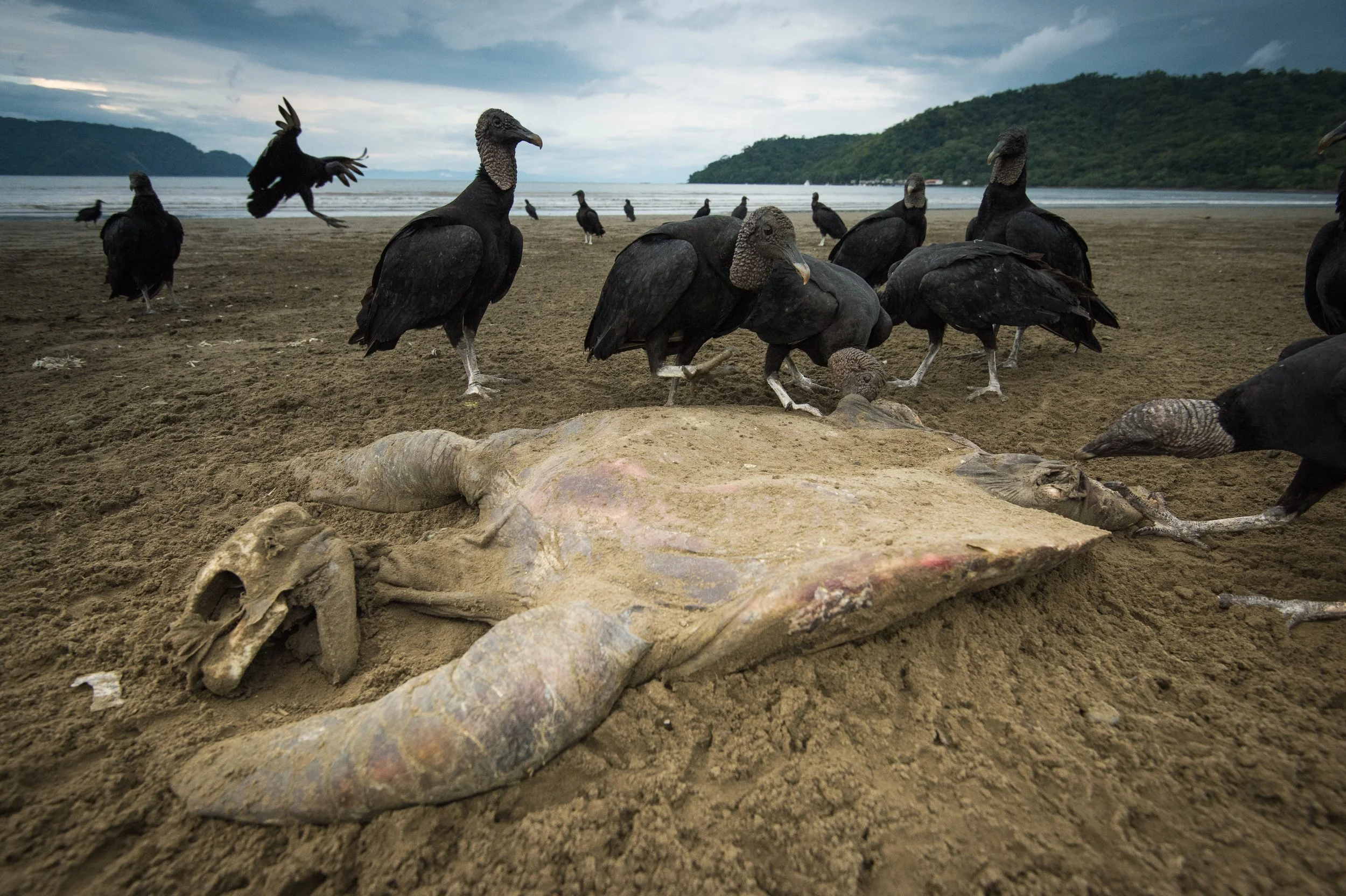
A green sea turtle is consumed by a group of black vultures on a beach in Costa Rica. The turtle likely died as a result of bycatch from indiscriminate fishing practices that kill millions of marine animals each year. This image was awarded in the 2014 Wildlife Photographer of the Year competition.
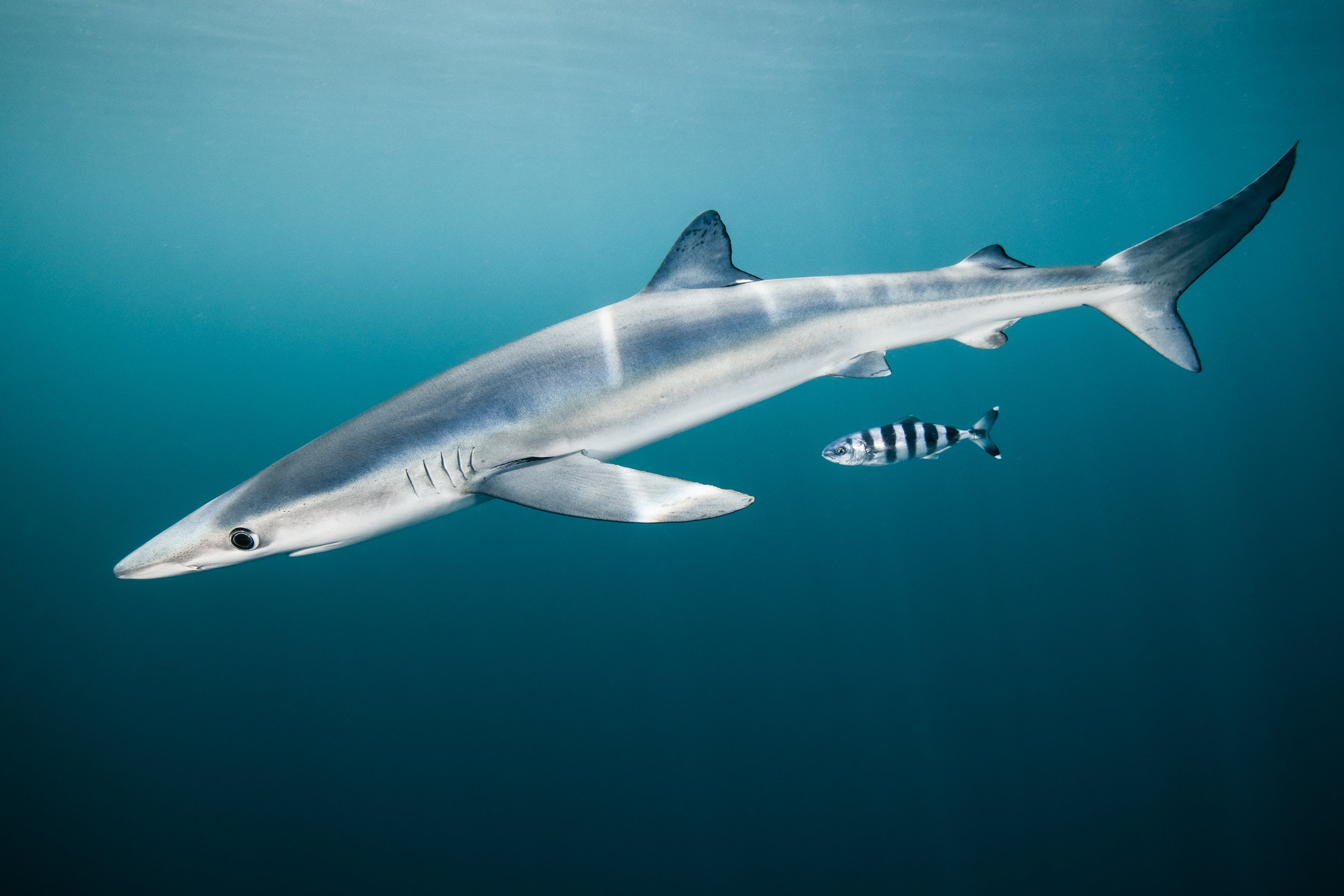
A blue shark and pilot fish cruise the open ocean off Nova Scotia, Canada. A truly oceanic shark, blue sharks can roam accross entire ocean basins in search of food in the big blue.
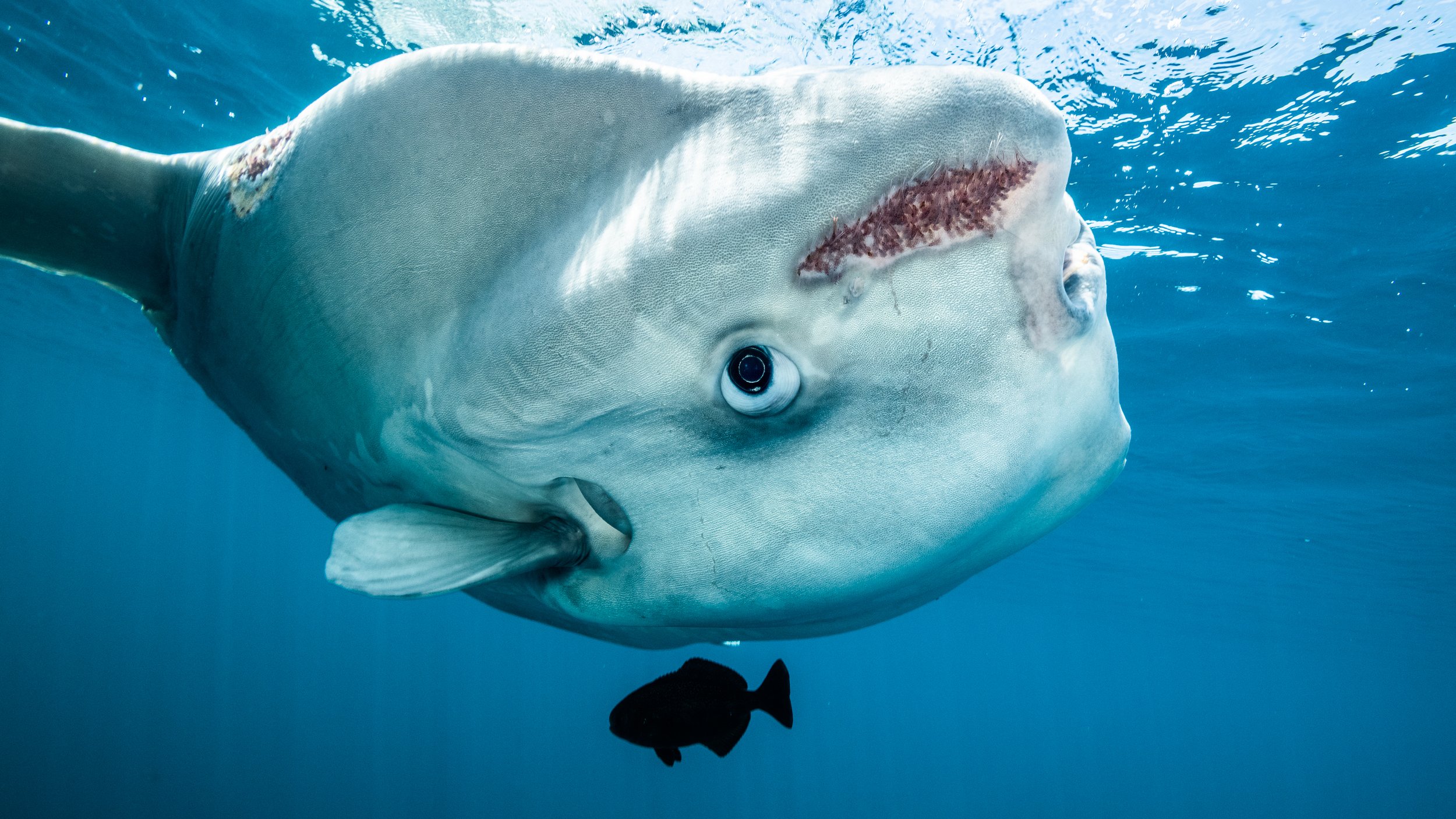
It’s peculiar that people often claim mola molas, or ocean sunfish, as their favourite fish. Perhaps it’s because molas are almost unimaginable — so strange and wonderful that it’s hard to believe evolution actually produced such a thing. In the crystal blue waters off Halifax, Nova Scotia, we watched them move with astonishing efficiency — even grace. Swimming beside the sunfish I returned their curious gaze and marvelled at their unique elegance. And I understood that the open ocean is a place full of life strange, beautiful, and awe-inspiring
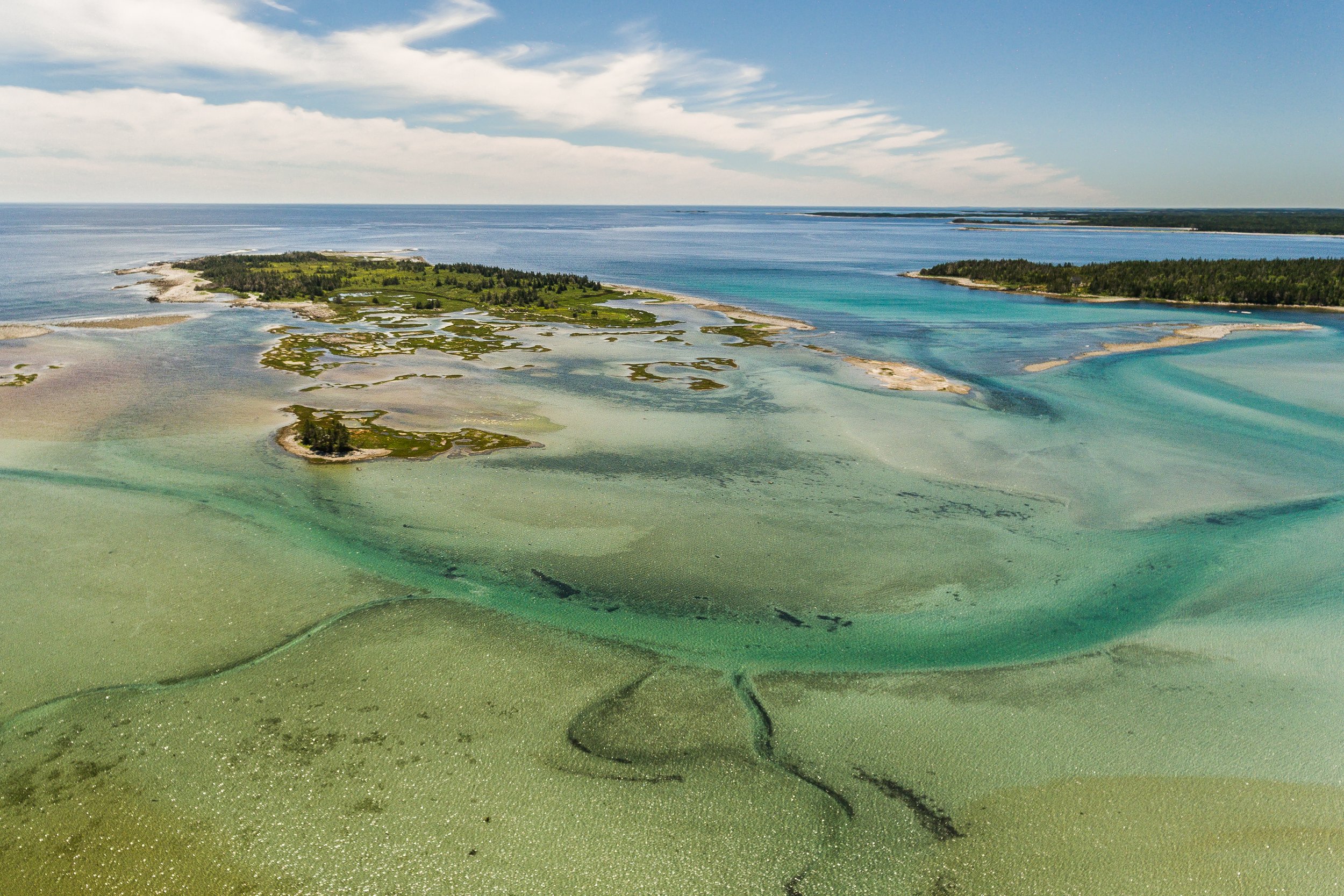
Aerial view of the complex and beautiful coastal ecosystem found along Nova Scotia's South shore, Canada. Oceans are intimately connected to coastal and freshwater ecosystems.
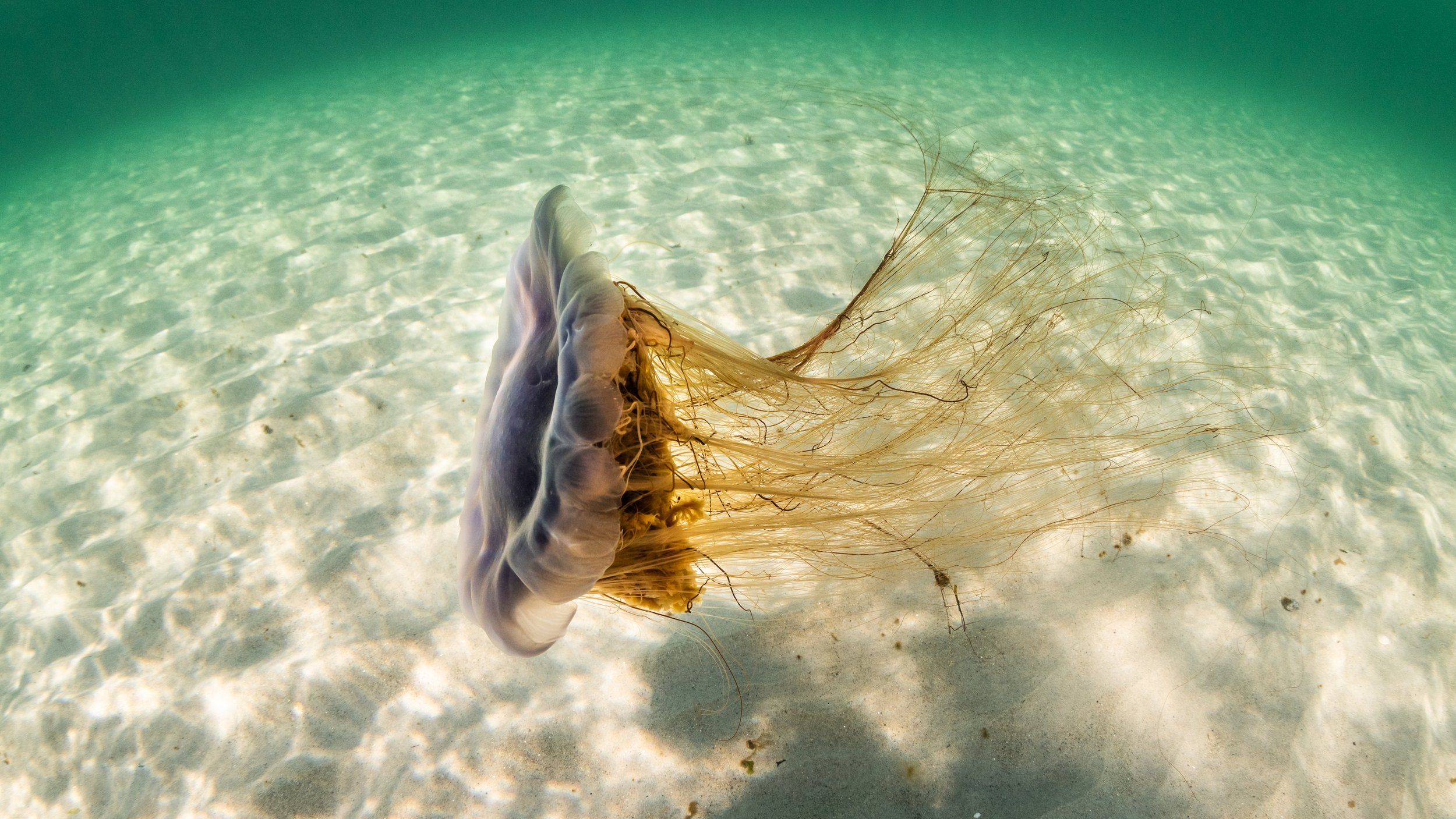
A lion's mane jellyfish drifts in the current off Nova Scotia, Canada. The lion's mane is the largest jellyfish in the world and can reach lengths of over 30 meters.
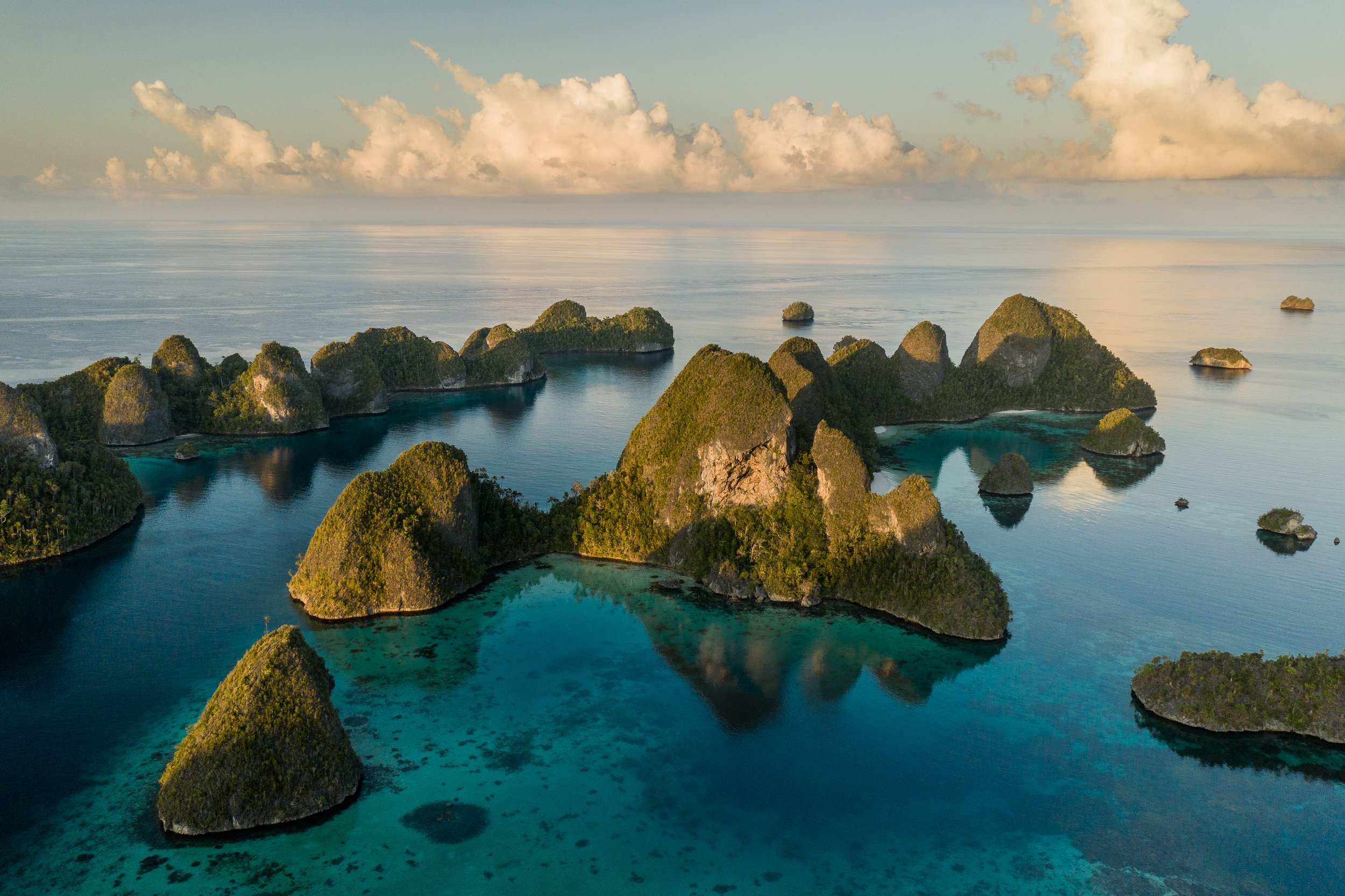
Aerial view of the Wayag lagoon; an uninhabited group of uplifted limestone islands in Raja Ampat, Indonesia. Raja Ampat lies at the heart of the coral triangle - the centre of marine biodiversity on our planet.
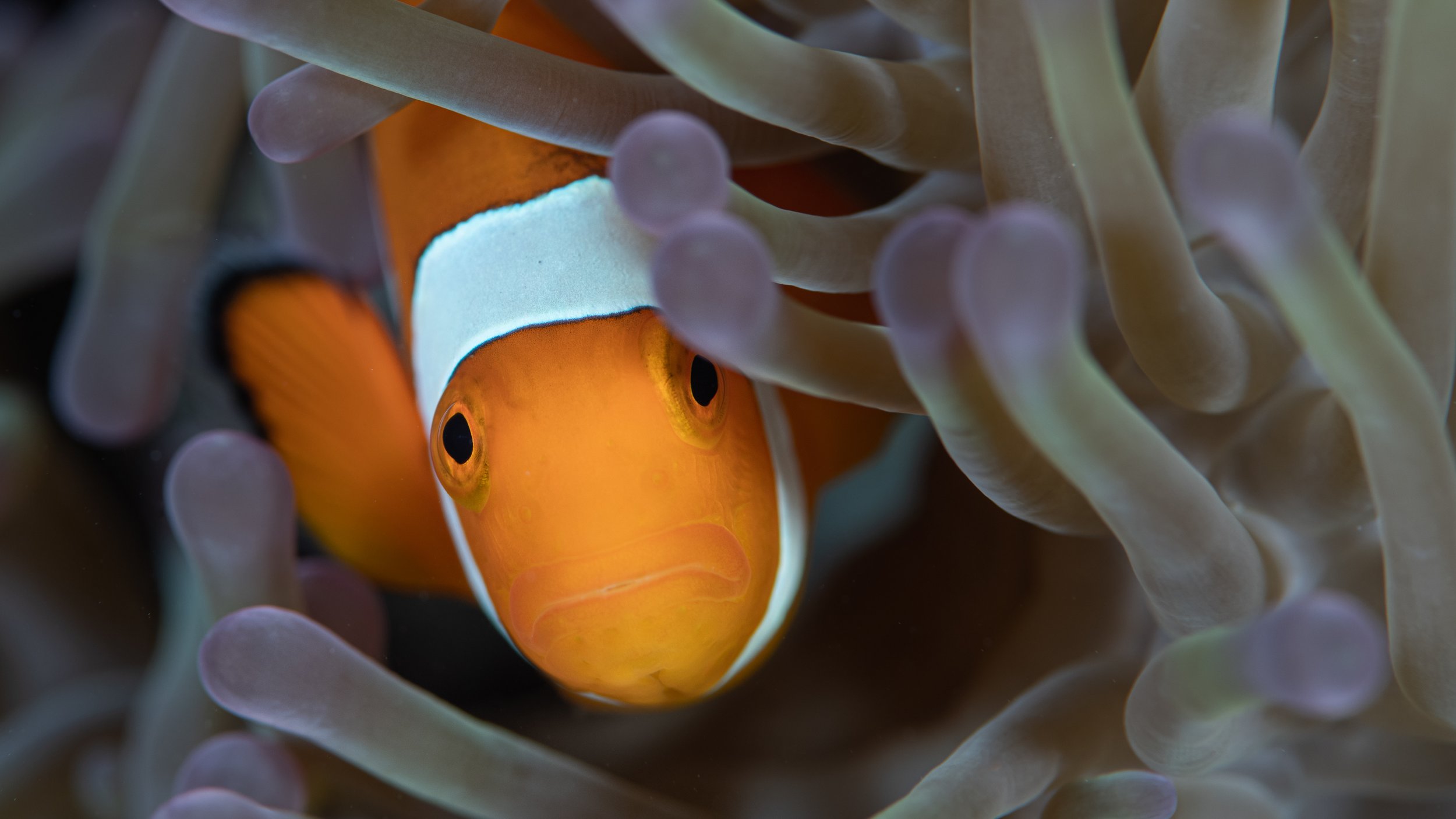
Western clownfish (Amphiprion oceallaris) in a sea anemone on a reef in Raja Ampat, West Papua, Indonesia. Not long ago, reefs in this area were devastated by bomb fishing and unsustainable fishing practices, but community led conservation efforts have turned the tide. Raja Ampat is now home to some of the healthiest coral reefs on Earth.
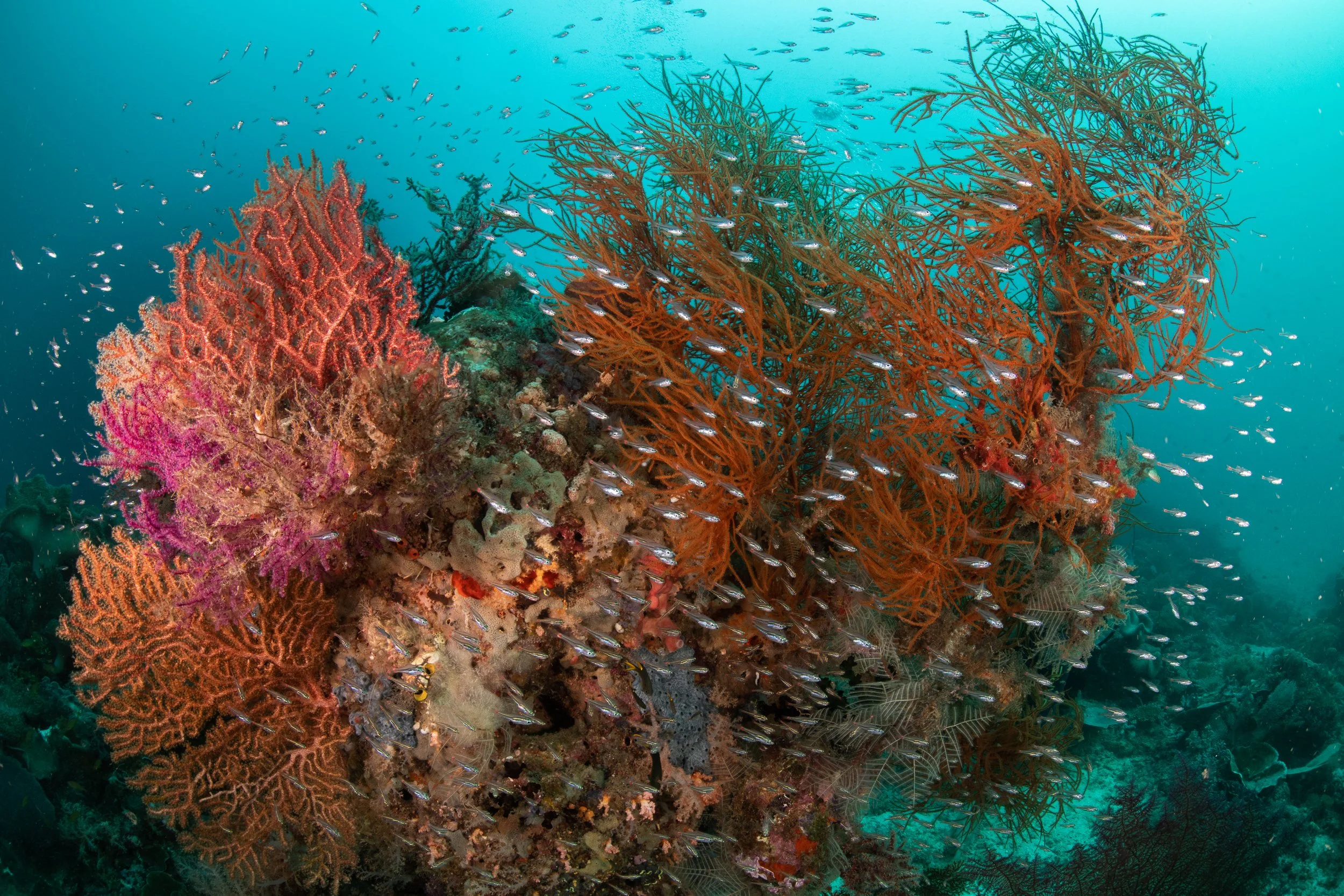
A school of glassfish shelter around a thriving coral reef in the shallow waters of Raja Ampat, Indonesia.

Orbiculate cardinalfish find refuge within a twisted fortress of mangrove roots in Raja Ampat, Indonesia. Rather than growing in murky waters, these unique "blue water mangroves" grow in clear, blue water, often occuring alongside colorful coral communities. Their dense roots provide an important nursery for young fish before moving off onto the reef.
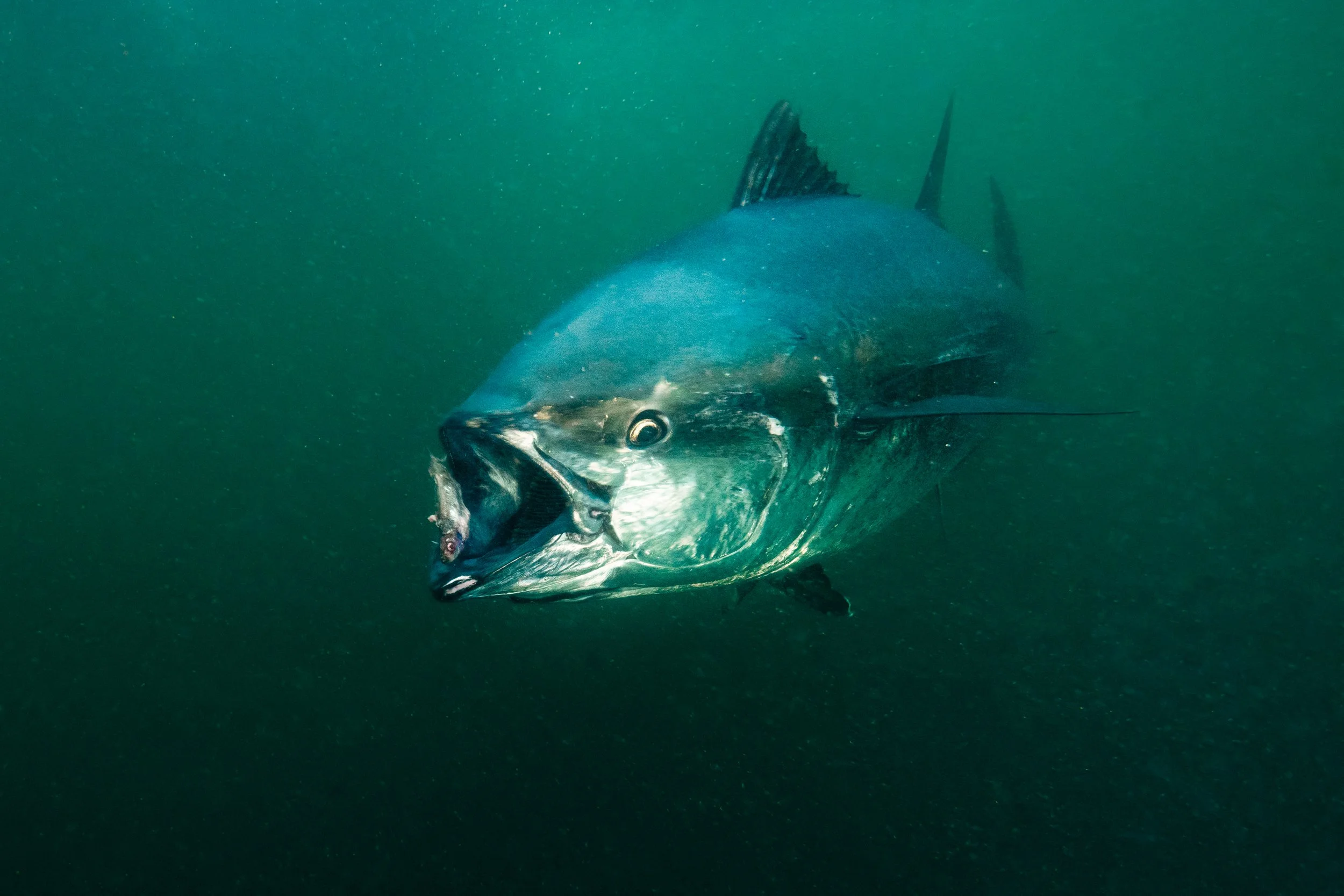
A giant Atlantic bluefin tuna, weighing as much as 700 kilograms, in the cold waters of the Guf of Saint Lawrence, Canada. Nearly driven to extinction by overfishing, this ocean giant is now recovering in some areas due to positive conservation action.
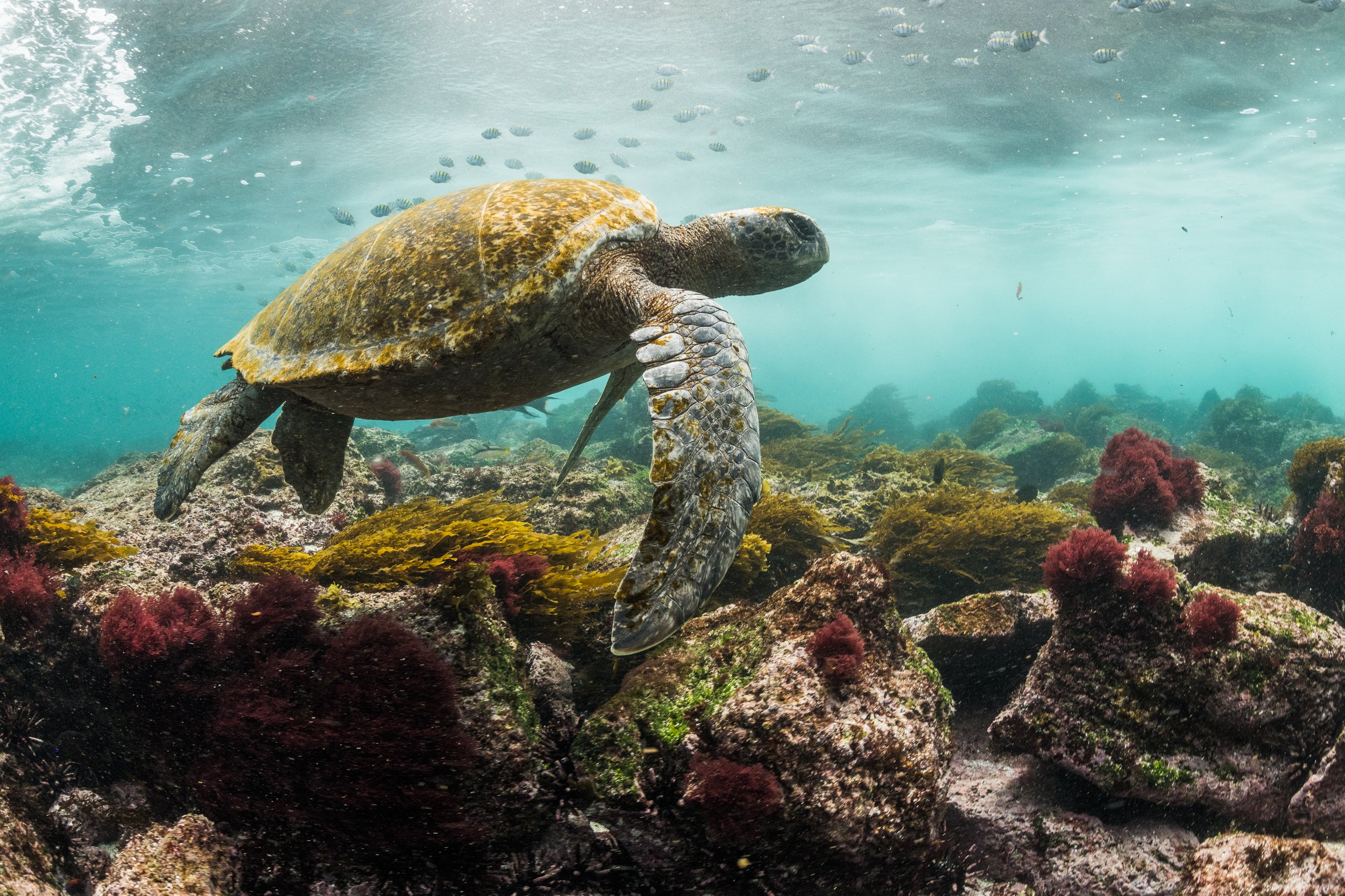
A Galápagos green sea turtle swims off the coast of San Cristobal Island in the Galápagos. The Galápagos islands has one of the highest densities of sea turtles on Earth - proof of the effectiveness of conservation efforts.